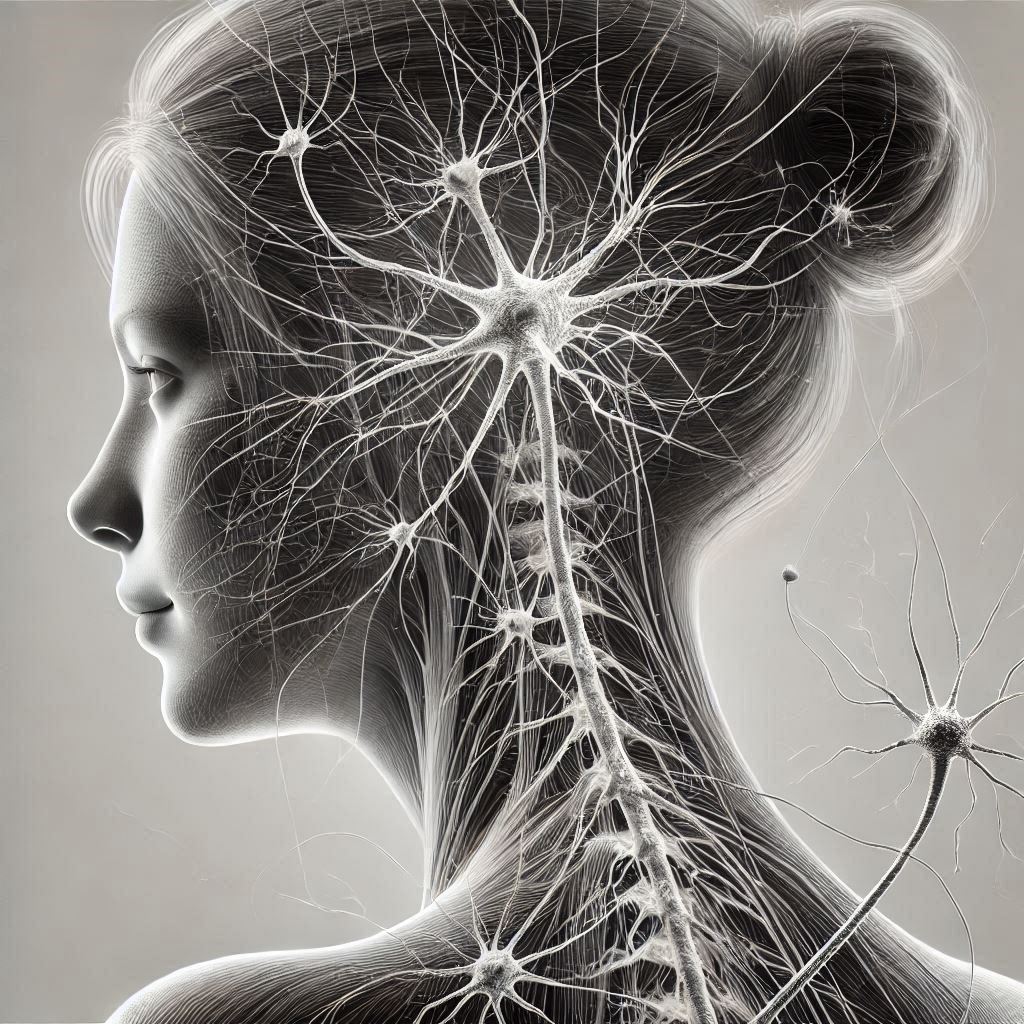Do you ever notice your hands tremble, or your legs shake when overwhelmed by anxiety? Shaking uncontrollably during a panic attack is a stark reality for many. It’s more than just a mere inconvenience; it’s a clear signal your body sends amidst a whirlwind of anxiety.
In this post, we’ll uncover what triggers such reactions and explore solutions to manage them. We’ll shed light on how these symptoms are linked to the body’s fight-or-flight response. With clarity on causes and practical approaches, you’ll gain valuable insights into taming these overwhelming episodes. So, let’s delve into the science behind the shaking and find ways to regain control.
The Physiology of Panic Attacks and Shaking
If you’ve experienced a panic attack, you know that it’s much more than just feeling nervous. One of the classic symptoms is uncontrollable shaking, and this physical reaction can seem perplexing. But it’s all tied to how our bodies are wired to respond in threatening situations. Let’s explore the physiological underpinnings that drive these intense episodes of shaking during panic attacks.
Fight or Flight Response
When we’re faced with perceived danger, our body kicks into high alert, ready to either fend off the threat or escape. This is known as the fight or flight response. It’s an ancient survival mechanism that has helped humans over millennia. When a panic attack strikes, our brain misinterprets a situation as life-threatening, and this alarm system goes into overdrive.
Here’s what happens:
- Heart rate increases to pump more blood to vital organs and muscles.
- Breathing quickens to supply more oxygen to our body.
- Muscles tense up, preparing to act, which often results in shaking or trembling.
Think of it as your body revving up like a car engine in neutral gear, ready to go but without a clear path forward. This excess energy has nowhere to go during a panic attack, leading to visible shaking. Understanding this can help make sense of why your body reacts the way it does during these moments.
Neurotransmitter Involvement
The body’s response doesn’t occur in isolation; it’s a cascade triggered by chemicals in the brain. Neurotransmitters, particularly adrenaline and cortisol, play starring roles here. These chemicals are your body’s way of shouting, “It’s go time!” even if no real danger exists.
- Adrenaline, sometimes called epinephrine, spikes during a panic attack. This “fight hormone” prepares every fiber of your being to respond to a threat, increasing your heart rate and invigorating your senses. But it also ramps up muscle tension, contributing to shaking.
- Cortisol, the “stress hormone,” takes a bit longer to peak than adrenaline but prolongs the body’s state of alert. This can lead to sustained periods of discomfort long after the adrenaline rush has subsided.
By understanding the roles of these neurotransmitters, you can better grasp why the body reacts so intensely during a panic attack. Awareness of these processes is the first step in managing symptoms and seeking appropriate help.
Recognizing that your body’s reaction is a deeply ingrained survival response can make the experience a little less daunting. It’s your brain trying to protect you, albeit in an exaggerated way, from what it thinks is a threat.
Why Do Some Individuals Shake During Panic Attacks?
Panic attacks bring about a host of uncomfortable symptoms. Among them, uncontrollable shaking can be particularly distressing. Understanding the reasons behind this trembling is key to managing panic attacks effectively. Shaking is not just a reaction; it’s a complex interaction of physiological and psychological factors that manifest during these acute episodes.
Physiological Factors
The body’s natural reactions during panic attacks can cause shaking. Key contributors to this include:
- Muscle Tension: When the body senses a threat, muscles contract in preparation for action. Constant muscle tension can lead to quivering or shaking, akin to how a tightly wound string vibrates under pressure.
- Adrenaline Surges: Adrenaline floods your system during a panic attack. This hormone readies your muscles and organs for a quick response. But this surge can also lead to overstimulation, resulting in noticeable tremors.
Psychological Factors
Beyond physical responses, the mind plays a critical role in triggering shaking during panic attacks:
- Anxiety Sensitivity: Some individuals are more sensitive to the bodily sensations of anxiety. This heightened awareness can amplify the perception of physical symptoms, making shaking seem more pronounced.
- Past Traumatic Experiences: Those with past traumas may have an intensified response to stress, leading to increased shaking. The body can remember these events, reacting with heightened anxiety even in non-threatening situations.
Hyperventilation and Its Effects
Breathing patterns often change during panic attacks. Hyperventilation is a common issue and it can exacerbate shaking:
- Rapid Breathing: Quick, shallow breaths lower carbon dioxide levels in your blood, which can cause dizziness and tingling. As your body tries to compensate, you may begin to shake.
- Lightheadedness: The altered balance of gases in your blood can make you feel faint and unsteady. This sensation can induce further anxiety, creating a cycle where breathing becomes even more erratic, and shaking worsens.
Understanding these elements helps demystify the shaking experienced during panic attacks. It’s your body’s attempt to manage an intense situation, albeit one perceived rather than actual. Recognizing these responses is a significant step toward reclaiming control during these challenging moments.
Coping Strategies and Management Techniques
Uncontrollable shaking during a panic attack can be overwhelming, but there are effective strategies to help regain control. Learning how to manage these symptoms involves understanding both the physical and mental sides of anxiety. In this section, we’ll explore practical techniques to ease the physical manifestations and highlight professional treatment approaches that offer long-term support.
Breathing Techniques
Regulating your breath is a powerful way to calm your body and reduce shaking. When panic strikes, it can feel like you’re caught in a tidal wave. Here’s how breathing can be your lifebuoy:
- Deep Breathing: Focus on inhaling slowly through your nose for a count of four, holding the breath for a count of four, and then exhaling gently through your mouth for another four counts. This simple exercise can help slow your heart rate and ease tension.
- Diaphragmatic Breathing: Engage your diaphragm rather than your chest. Place one hand on your stomach and the other on your chest. As you breathe in, your stomach should move outwards more than your chest. This shifts focus away from panic to a rhythmic and calming routine.
- Box Breathing: Visualize breathing in a box shape. Inhale for four counts, hold for four, exhale for four, and pause for four. This method can bring your attention away from anxiety and back to a state of calm.
Grounding Techniques
Anxiety often sweeps you off your feet, but grounding techniques can help anchor you. They’re like your mental lighthouse in a stormy sea:
- Five Senses Exercise: Identify five things you can see, four things you can touch, three things you can hear, two things you can smell, and one thing you can taste. This shifts your focus from internal fear to external reality.
- Physical Touch: Carry a small object, like a smooth stone, and focus on its texture and temperature. This tactile distraction can reduce the intensity of a panic attack.
- Mindful Walking: Pay attention to each step’s sensation on the ground. This can help redirect your thoughts toward physical sensations and away from anxiety.
Professional Treatment Options
While self-help techniques are valuable, professional treatment offers comprehensive support. Therapy and medication can be strong allies in overcoming the cycle of panic attacks:
- Cognitive-Behavioral Therapy (CBT): CBT is a well-regarded method where you learn to identify and challenge thought patterns that cause anxiety. This therapy helps restructure those thoughts to reduce panic symptoms.
- Exposure Therapy: Gradually exposes you to the source of your anxiety in a controlled setting, helping you build tolerance and reduce fear responses over time.
- Medication: Prescriptions such as SSRIs or benzodiazepines may be recommended by healthcare providers to help manage symptoms. It’s important to discuss these options with a doctor to ensure the best plan for your situation.
Applying these strategies can pave the way toward better management of panic attacks. Whether through breathing techniques, grounding exercises, or professional help, each approach can empower you to find calm amidst the chaos.
When to Seek Help
Uncontrollable shaking during panic attacks can be deeply unsettling and should not be underestimated. Knowing when to seek professional help is crucial. It’s about recognizing the tipping point between normal anxiety and something requiring further intervention.
Recognizing Severity of Symptoms
Panic attacks can vary widely in intensity. While occasional mild attacks might be manageable with self-help strategies, certain criteria suggest it’s time for expert guidance:
- Frequency: Are attacks becoming more frequent or disruptive to your daily life?
- Duration: Do symptoms persist longer than usual, making it harder to recover after each episode?
- Impact on Daily Life: Is it affecting your work, relationships, or social activities?
If the answer is yes to any of these, seeking help from a mental health professional could be beneficial in addressing your symptoms effectively.
Support Systems and Resources
Finding the right support network is essential. Numerous resources can provide you with the support you need:
- Support Groups: Engaging with others who understand your experiences can be incredibly comforting. Local mental health organizations often offer panic disorder support groups.
- Online Resources: Websites like the National Alliance on Mental Illness (NAMI) offer online communities and information for managing anxiety and panic disorders.
- Therapist Directories: Platforms like Psychology Today can help you find therapists specializing in anxiety disorders.
Building a strong support system with these resources can empower you to manage your symptoms more effectively, offering a sense of community and validation. Whether through face-to-face support or online interactions, remember you’re not alone in this journey.
Conclusion
Uncontrollable shaking during panic attacks is a clear sign of your body reacting to perceived stress. Recognizing the fight-or-flight mechanism helps frame these episodes as physiological rather than mysterious. The surge of adrenaline and increased muscle tension are natural responses, but they can be managed.
Implementing practical coping strategies, such as breathing exercises and grounding techniques, can alleviate symptoms. These methods shift focus and provide stability, aiding in regaining control during intense moments. Professional support, including therapy, can further empower you with the tools needed to reduce the frequency and severity of attacks.
If panic attacks disrupt your life, take action. Seek professional help to better navigate these challenges. Share your experiences, connect with others facing similar issues, and explore the available resources. Remember, understanding and addressing these triggers leads to effective management and improved well-being.








